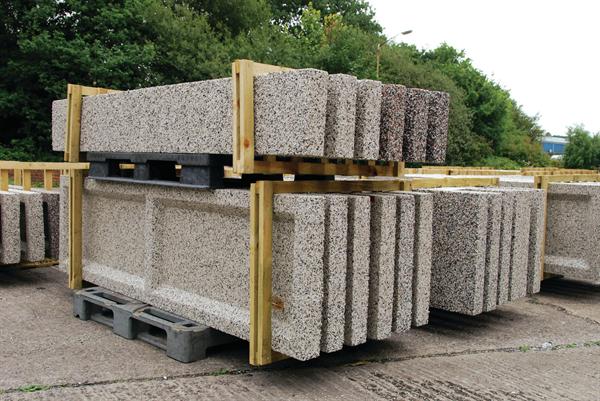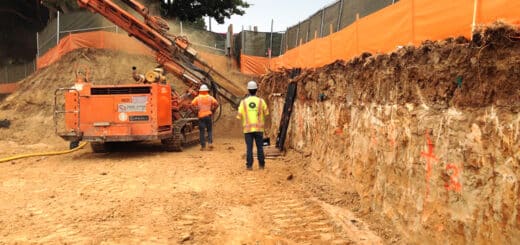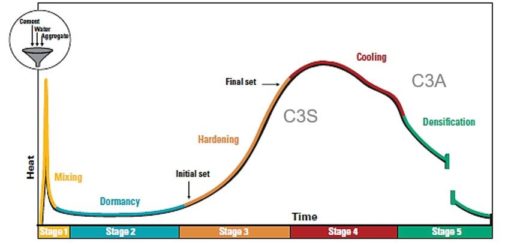Ultimate Guide to the Best Concrete Alternatives
Today we are looking for a concrete alternatives as we are much now concerned about the sustainability of the industry. Let’s look at the history of the development of concrete.
Concrete is a man-made material that is in widespread use throughout the world. It is a composite material made from sand, gravel, water, and cement. The word concrete comes from the Latin word “concretus” which means “to grow together.”
The earliest concrete was developed in Ancient Rome and consisted of volcanic ash mixed with lime and water. However, it wasn’t until 1824 when Joseph Aspdin came up with a recipe for modern-day Portland cement that we started to see widespread usage of concrete.
3 Advantages of Using a Concrete Alternative
Concrete is a very common material used in construction. It is easy to work with and it has many benefits such as durability. However, there are also disadvantages of concrete that need to be considered.
There are many alternatives to concrete that can be used instead of it to have the same benefits without the disadvantages. Here are three advantages of using a concrete alternative:
1) Concrete alternatives have higher insulation values than concrete. This means that they can reduce energy consumption by up to 30%.
2) Concrete alternatives are more environmentally friendly and sustainable than concrete because they don’t emit carbon dioxide like concrete does when it’s being created and during its lifetime.
3) Concrete alternatives don’t contain any toxic chemicals which makes them safer for people who work with them or live near them.
What are the Benefits of an Eco-Friendly Alternative for your Building Project?
There are many benefits to using eco-friendly alternatives for building projects. The first is that it is sustainable. Eco-friendly materials are made from renewable resources, and they also have a low carbon footprint. Another benefit is that these materials are less expensive to use than concrete or steel.
Many people think that these eco-friendly alternatives to concrete would not be strong enough or durable enough, but this is not the case at all. There are some eco-friendly alternatives to concrete that can be stronger than concrete depending on how they were manufactured.
Some of the Concrete alternatives are
- Recycled Plastic
- Ashcrete
- Green Concrete
- Blast Furnace Slag
- Papercrete
- Bamboo
- Glasscrete
- Hempcrete
- Micro Silica
Let’s look at all this material in brief.
Recycled Plastic
Plastic is one of the most wasteful materials on earth. It takes up to 500 years for plastic to decompose in a landfill.
However, there are many ways that we can turn this waste into something useful. One way is by recycling and making it into roof tiles and concrete. This process reduces the need for mining and quarrying and also saves energy since it doesn’t require any extra heat or chemicals.
Another way to reuse plastic is by using it as insulation for indoor spaces, like walls and roofs. This helps reduce the need for other materials like wood or foam boards, which take more time to decompose than plastic does, thus reducing our carbon footprint on the environment.
Another application of recycled plastic is
- PVC windows
- Bricks
- Fences
- Floor tiles
- Carpeting
- Ceiling tiles
Ashcrete as Alternative Construction Material
Ashcrete is a construction material that is made by combining fly ash, borate, bottom ash, and chlorine compound. The use of ashcrete as concrete alternatives (construction material) is still in its infancy stage.
It has many advantages such as being fireproof and earthquake-resistant.
It also has a very low carbon footprint as it is made from natural materials like lime, sand, water, and ash.
With the growing concern for the environment, this building material can be a good solution for sustainable construction. Some of the advantages of ashcrete are,
- Durability
- Resistance to acid
- High fire resistance
- Cost-effective material
- Environmentally friendly
- Good workability
Green Concrete as an Alternative Material for Concrete
Concrete is a material that is widely used in construction, and it has been used for more than 50 years.
However, the production of concrete creates a lot of CO2 emissions. To reduce the environmental impact of concrete, there are new types of concrete that are being developed and researched.
One such material is green concrete – it is made from recycled materials like glass, plastic, and metal.
Green concrete has a higher strength than conventional concrete. It is also easier to use and because it does not require as much nitrogen, carbon dioxide, and sulfuric acid in its production, the green concrete emissions are at least 75% less.
Green cement is made by mixing recycled glass, metal, and plastic into normal cement has the same physical properties but is 50% lighter than conventional cement.
Blast Furnace Slag as an Alternative Material
Blast furnace slag is a byproduct of blast furnace production. It is a fine, dark grey to black powder that is created when iron ore, coke, and limestone are heated to extreme temperatures.
The material has various advantages including its low cost and its ability to be used in a variety of applications.
However, one of the disadvantages of this material is that it can’t be used as an aggregate in concrete production because it contains appreciable amounts of sulfates and other soluble salts. which can react with cement and cause it to fail.
The material has various advantages including its low cost and its ability to be used in a variety of applications as a concrete alternatives. However, one of the disadvantages of this material is that it can’t be used as an aggregate in concrete production because it contains appreciable amounts of sulfates and other soluble salts which can react with cement and cause it to fail.
Bamboo as Concrete Alternative Construction Material
Bamboo is a sustainable and renewable resource that can be used as an alternative building material. It is an eco-friendly material that also can withstand natural disasters.
The argument for bamboo as a construction material is based on it being one of the fastest-growing plants in the world. Bamboo can grow up to 3 meters in height every day and it can regenerate from its roots or rhizomes if cut down, making it a sustainable and renewable resource.
The use of bamboo as a construction material has been popularized by architects like Shigeru Ban who have made use of this plant’s properties for their architectural projects.
Bamboo is also considered an environmentally friendly building material because it does not need any fertilizers, pesticides, or herbicides to grow.
Glasscrete as Alternative Construction Material
Glasscrete is a new construction material that has been gaining popularity in recent years.
Glasscrete is made up of recycled glass and concrete, which means it is both durable and sustainable. It is also fire-resistant, which makes it an excellent choice for situations where safety is a concern.
Glasscrete is an excellent option for use in high-volume as well as low-volume areas because it is a blend of recycled materials. It can also be used in situations where there are environmental concerns such as a creek, stream, or tidal area.
Hempcrete as Alternative Construction Material
Hempcrete, a type of building material, is created by mixing hemp shivs with a lime-based binder and water. This material has many benefits that make it an attractive alternative to other construction materials.
One of the main advantages of this material is that it is sustainable and eco-friendly. Hempcrete does not use any form of fossil fuels in its production, so it does not contribute to greenhouse gas emissions as other building materials do. It’s also lighter than concrete, making it easier for builders to transport and work with.
The idea for hempcrete was first developed in France in the late 1980s by Jean-Pierre Dutilleux and Jean-Paul Fitoussi. They were looking for an alternative to traditional construction materials like concrete because they wanted something more environmentally friendly. They experimented with different recipes until they found one that was both environmentally friendly and cost-effective concrete alternatives.
Micro Silica as Alternative Construction Material
The use of Micro Silica, a mineral found in sand, as an alternative construction material is one of the most promising innovations that can help to solve the global housing shortage.
Micro Silica has been used for over a century in making glass and ceramics. It is also used in the production of various types of insulation. Recently, it has been discovered that Micro Silica is an ideal building material because it can be molded into any shape, and it can be produced at a lower cost than other construction materials.





